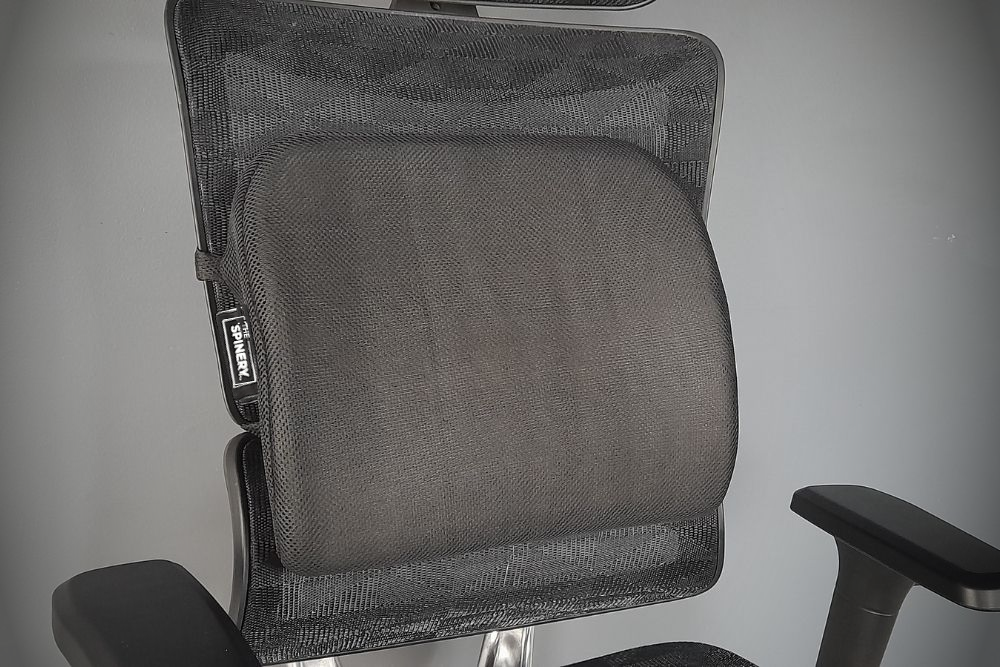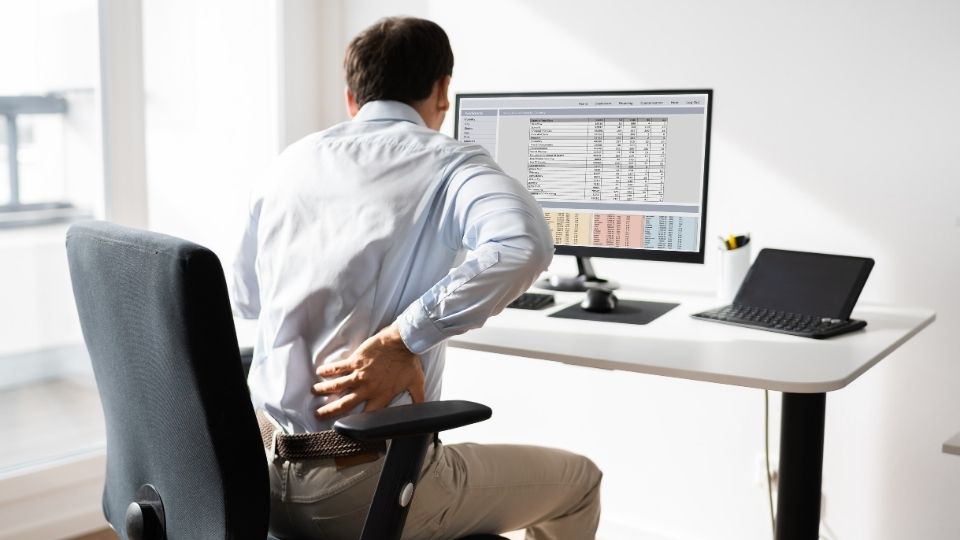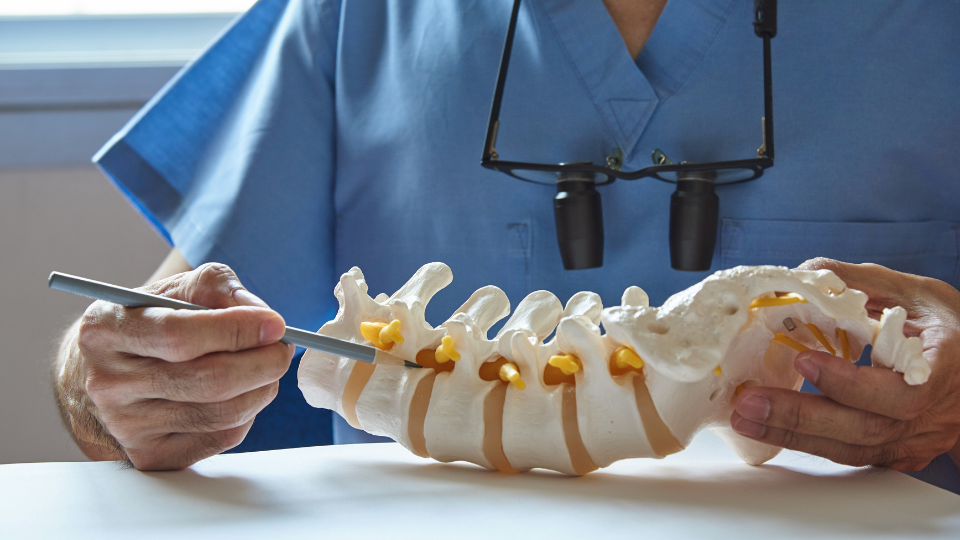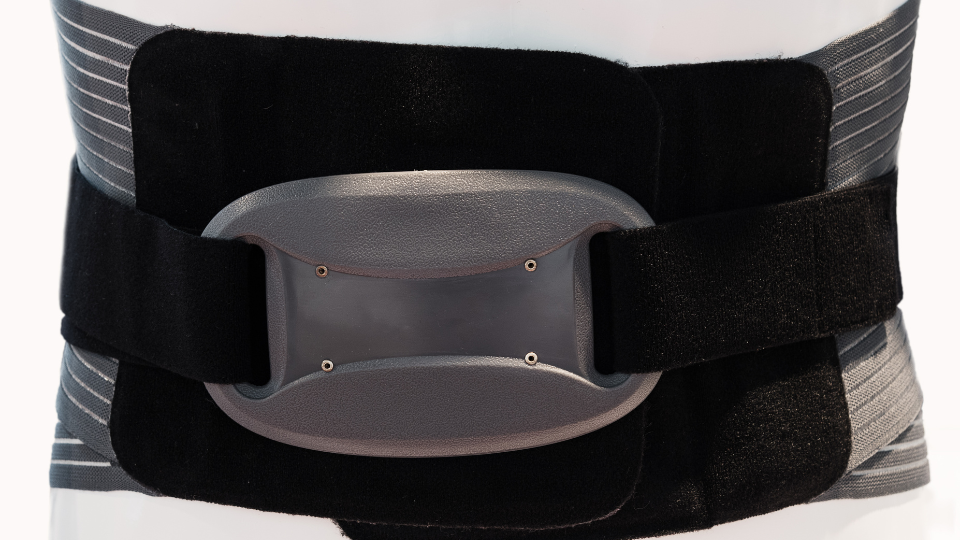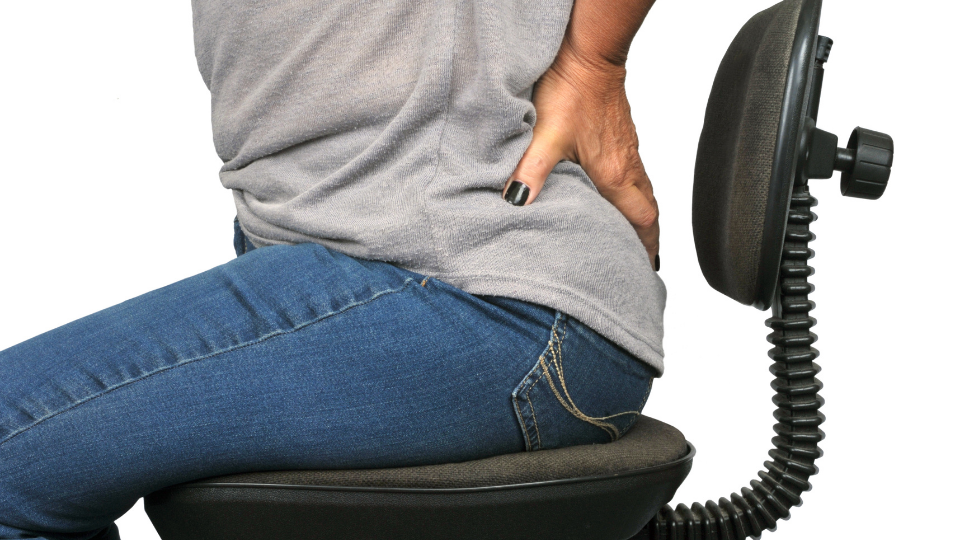There’s no denying that lumbar support is a great feature to have in a chair. It can help protect your back and keep you comfortable during long days at work. But is lumbar support bad for you? Some experts believe it can be, especially if you’re not using it correctly. Keep reading to learn more about the potential risks of lumbar support and how to avoid them.
As a general rule, lumbar support may be harmful if it does not fit precisely to the contours of your own body, which can throw your spine out of alignment and strain other parts of your body. Lumbar support can weaken your core muscles over time by taking your core muscles out of the equation.
Deciding if lumbar support is right for you is an important topic. I have some simple solutions for you! My YouTube channel, 30 years of Chiropractic practice, trained ergonomist, published book, engineered solutions, and successful Kickstarter campaign makes me an expert on this subject!
All Day Comfort & Support
What Is Lumbar Support and Why Do People Use It?
Lumbar support refers to the use of devices or products to provide support for the lower back. These can include pillows, mattresses, or belts. Lumbar support may be used by individuals for various reasons, but it is commonly used to help alleviate pain in the lower back. By taking pressure off the spine and muscles, lumbar support may provide relief from pain. Additionally, lumbar support may also be used to improve posture and potentially prevent injury. People who suffer from chronic back pain or are recovering from an injury may benefit from using lumbar support.
Black Friday: 35% Off Today
Typical Delivery 1-3 Days
The Benefits of Lumbar Support
Many people suffer from back pain, and it can be debilitating. Many products on the market claim to offer relief, but lumbar support is one of the most effective. Lumbar support helps maintain the spine’s natural curve and can be used in both seated and standing positions.
Additionally, lumbar support may help distribute weight evenly, which can help to reduce strain on the back muscles. Many different types of lumbar support are available, and a simple foam cushion can be just as effective as a more expensive model. To achieve optimal results, it may be beneficial to look for lumbar support that is adjustable, allowing for customization to the fit. Regular use of lumbar support may help improve posture and alleviate back pain.
All Day Comfort & Support
How to Correct Your Posture While Sitting
People rarely think about their posture until they experience pain in their backs or necks. Poor posture, however, can cause numerous health issues, including headaches, muscle strain, and fatigue.
You can do a few simple things to improve your posture and reduce your risk of back pain, such as:
- Sit with your feet flat on the floor and keep your shoulders back and relaxed.
- Keep your head up and your ears directly over your shoulders.
- Avoid crossing your legs or leaning to one side for long periods.
- Use a chair that provides good lumbar support and adjust it to fit your body.
- Take frequent breaks to stand up and move around.
- Use a lumbar roll or cushion to help maintain the natural curve of your lower back.
- Make sure your computer monitor is at eye level so that you don’t have to tilt your head up or down to see it.
- Incorporate stretching exercises into your daily routine to improve flexibility and strength.
- Consider your posture and alignment in other activities such as standing, walking and bending.
- Adjust your work environment and equipment to fit your body and needs.

Sitting at a desk all day can take its toll on your back and neck. To keep your spine properly aligned and reduce muscle strain, investing in an ergonomic seat cushion is a wise decision. Even better is to add a natural latex seat cushion designed by a back expert, as it will provide additional support for both your tailbone and lower back. In addition, unlocking your knees to slightly spread apart will help you engage more of the core muscles and thus improve balance. A good way to explain the concept of this design is how I demonstrate it on TV; this will provide viewers with helpful visuals to understand how to sit correctly for long-term health benefits.
I was surprised how similar cheap memory foam seat cushions were on Aliexpress from the listing on Amazon!
The Risks of Using Lumbar Support
Lumbar support is often touted as a valuable tool for preventing lower back pain, but there are certain risks associated with its use. First and foremost, many lumbar supports rely on rigid materials that may exacerbate existing pain. Additionally, relying too heavily on lumbar support can lead to muscle weakness, particularly in the core muscles crucial for supporting the spine.
Black Friday: 35% Off Today
Typical Delivery 1-3 Days
Furthermore, overuse of lumbar support can prevent people from retraining their bodies to properly position themselves while sitting or standing, leaving them more prone to musculoskeletal problems in the long run. Clearly, before opting for lumbar support, it is essential to consider all potential risks and side effects associated with its use.
How to Use Lumbar Support Safely and Effectively
Chiropractors may recommend the use of lumbar support as a way to alleviate lower back pain. Lumbar support may aid in reducing the strain on back muscles and help the spine rest in its natural position when used correctly. It is important to use lumbar support correctly to prevent further injury.
When starting to use lumbar support, begin by wearing it for short periods of time, such as 15-20 minutes, and gradually increase the duration as you become accustomed to it. It is also essential to ensure that the support is positioned correctly, it should fit snugly against the lower back. With proper use, lumbar support may be an effective tool in reducing lower back pain.
Is Too Much Lumbar Support Bad?
Finding the right balance between too much and not enough lumbar support can be tricky. While some experts suggest that a complete natural posture is best, others believe this could lead to long-term back pain issues. On one hand, too much support may cause poor posture and slouching; on the other hand, it could help keep us comfortable while protecting our spine from strain in the short term. Ultimately, it’s up to each individual to decide what level of lumbar support works for them!
If you are into super easy and inexpensive alternatives to office chairs, I wrote a fantastic article on how and why you should consider these options for back pain, and I encourage you to read it!
Is Lumbar Support Healthy?
There is a lot of debate about the health benefits of lumbar support in both workout settings and everyday life. Some argue that lumbar support will help improve your posture, reduce aches and pains, and prevent injury. However, others claim that having too much support weakens your core muscles, forcing your body into bad habits.
Ultimately, the jury is still unsure whether lumbar support is good or bad for you. There are plenty of studies that show both positive and negative effects. Therefore, when choosing whether or not to use lumbar support, the best advice seems to be to listen to your own body and do what works for you. After all, what might be unhealthy for one person could be perfectly healthy for another. So try out different options, experiment with different lumbar supports, and find what feels best for you!
How Much Lumbar Support Is Too Much?
Lumbar support is designed to relieve pain and discomfort in the lower back. Lumbar support works by providing support for the spine and keeping the back aligned. Various types of lumbar support are available, ranging from simple cushion inserts to more complex designs.
The amount of lumbar support that is appropriate can vary for each individual, but there are a few general guidelines to follow. For example, lumbar support should be positioned to support the spine’s natural curve, it should be firm enough to provide support but not uncomfortable, and it should be adjustable to be tailored to the needs of each person. By following these guidelines, you can ensure that you get the right lumbar support to meet your needs.
Despite their popularity, there is some debate about using back supports. Some proponents claim that they can help relieve pain and improve posture, while others argue that they can do more harm than good. There is some evidence to support both sides of the argument. For instance, one study found that participants who used back support experienced less low back pain than those who did not use one. However, another study found that people who wore back supports were more likely to experience muscle weakness and reduced range of motion. As with many things, the jury is still out on whether or not back supports are genuinely beneficial. Ultimately, it may be best to consult a chiropractor or physical therapist before using one.
Where Should I Put My Lumbar Support?
There are important factors to consider when determining the best location for lumbar support. It is important to choose a location that keeps the spine in a natural neutral position while sitting. This should be a place where the lower back is supported but not over-extended.
Additionally, it is important to choose a location that is easily accessible and can be adjusted as needed. Some people find it helpful to place their lumbar support on office chairs or car seats. Ultimately, finding the right location for lumbar support is about assessing your needs and preferences and making adjustments accordingly. It’s important to ensure that the lumbar support provides optimal support and comfort.
What Does a Compressed Spine Feel Like?
A compressed spine can feel like a crushing weight on your shoulders. It can make standing up straight or even moving your arms difficult. The pain can be sharp or dull and might radiate down your arms or legs. You might also feel numbness or tingling in your extremities. In severe cases, a compressed spine can cause paralysis. If you suspect a compressed spine, you must see a doctor immediately. Only an X-ray or MRI can confirm the diagnosis. Once the diagnosis is confirmed, your chiropractor will develop a treatment plan to relieve your pain and improve your mobility. With proper treatment, most people with a compressed spine can enjoy a good quality of life.
Why Is Lumbar Support Uncomfortable?
The main reason why lumbar support is often uncomfortable is due to poor design or poor materials. If the support is not structured correctly, it may not provide adequate support, resulting in pain or aching in the spine. Additionally, if the materials used to create the support are too stiff or inflexible, they may not contour appropriately to the body, resulting in discomfort and irritation. Finally, even if the lumbar support is well-designed and made from appropriate materials, it can still be uncomfortable if misused. This lack of comfort might include using the support for too long without taking breaks, positioning it incorrectly on one’s body, or simply failing to use it properly. Consider these factors if you’re looking for lumbar support that relieves back pain.
Does Lumbar Support Help Sciatica?
I believe that it is possible that lumbar support may help alleviate symptoms of sciatica. Sciatica is a condition that causes pain and numbness in the lower back and legs. Lumbar support may assist by providing targeted support for the lumbar region and by helping to keep the spine aligned correctly while reducing strain on the muscles. Additionally, it may help reduce discomfort when sitting or standing for long periods, which can exacerbate sciatic pain. Overall, when used correctly and with a proper design, lumbar support may be an effective way to provide relief from symptoms of sciatica.
I’ve written a complete hands-on review about the best sitting position for sciatica, and here is what I tested best with my sciatica patients.
Does Everyone Need Lumbar Support?
Most people have experienced back pain at some point in their lives. It is one of the most common reasons for missed work days and doctor visits. While there are many potential causes of back pain, poor posture and improper ergonomics are among the most common. As a result, many people use lumbar support products to alleviate their back pain. But do these products work?
There is no definitive answer to this question. Some research suggests that lumbar support products can help reduce back pain, while other studies have found no apparent benefit. The effectiveness of these products may depend on the individual. For example, someone with severe back pain may find relief from a lumbar support product, while someone with milder symptoms may not notice any difference. Ultimately, it is up to each person to decide whether or not to use a lumbar support product. If you are suffering from back pain, one of these products may be worth trying to see if it provides relief.
Does Lumbar Support Help Lower Back Pain?
There is no doubt that lumbar support may help to alleviate lower back pain. Many studies have found that the correct placement and use of supports can reduce strain and discomfort, allowing the back to be more comfortable over long periods. This effect is likely due to how lumbar supports redistribute and balance body weight, taking pressure away from the joints and muscles in the lower back.Additionally, lumbar support may stimulate nerve endings in the spine, potentially leading to the release of endorphins and other natural pain relievers. Overall, it seems that lumbar support may help provide relief for lower back pain.
Will a Back Brace Help a Pinched Nerve?
In my opinion, the answer is no. A back brace may not be the solution for a pinched nerve, as it only supports the spine but does not address the underlying problem. Chiropractic care or consulting a healthcare professional may be a better option as they can help stretch and strengthen the muscles around the nerve and take pressure off the nerve which may potentially speed up the healing process. It’s advisable to consult a healthcare professional such as a chiropractor to discuss physical therapy as a treatment option.
Does a Back Brace Help a Bulging Disc?
A back brace is commonly thought to be an effective treatment for a bulging disc, but I believe that it may not provide the most optimal results. This is because a back brace prevents the spine from moving, leading to further stiffness and discomfort. Additionally, a back brace does not address the underlying problem of a bulging disc, which is often caused by weak abdominal muscles.
As a result, it may not be the most effective treatment. Exercises that strengthen the abdominal muscles and improve flexibility may be more beneficial in reducing pressure on the disc and alleviating pain. It is advisable to consult a healthcare professional for guidance on the best course of treatment.
Summary
Lumbar support can be inadequate for your back if you’re not using it correctly. Improper use of lumbar support may cause pain in your neck and shoulders and other health problems. Adjust your chair’s lumbar support to fit appropriately, and don’t put too much strain on your body.
If you experience pain or discomfort while using lumbar support, stop using it immediately and consult a health expert. The lumbar support should never cause pain or discomfort; if it does, something is wrong with how you use it. Always speak to a chiropractor or physical therapist if you have concerns about how lumbar support affects your health.
Sources:
- Thoumie, P., Drape, J.L., Aymard, C. and Bedoiseau, M., 1998. Effects of a lumbar support on spine posture and motion assessed by electrogoniometer and recording. Clinical biomechanics, 13(1), pp.18-26.
- Coleman, N., Hull, B.P. and Ellitt, G., 1998. An empirical study of preferred settings for lumbar support on adjustable office chairs. Ergonomics, 41(4), pp.401-419.
- Makhsous, M., Lin, F., Bankard, J., Hendrix, R.W., Hepler, M. and Press, J., 2009. Biomechanical effects of sitting with adjustable ischial and lumbar support on occupational low back pain: evaluation of sitting load and back muscle activity. BMC musculoskeletal disorders, 10(1), pp.1-11.
- Snijders, C.J., Hermans, P.F., Niesing, R., Spoor, C.W. and Stoeckart, R., 2004. The influence of slouching and lumbar support on iliolumbar ligaments, intervertebral discs and sacroiliac joints. Clinical Biomechanics, 19(4), pp.323-329.



